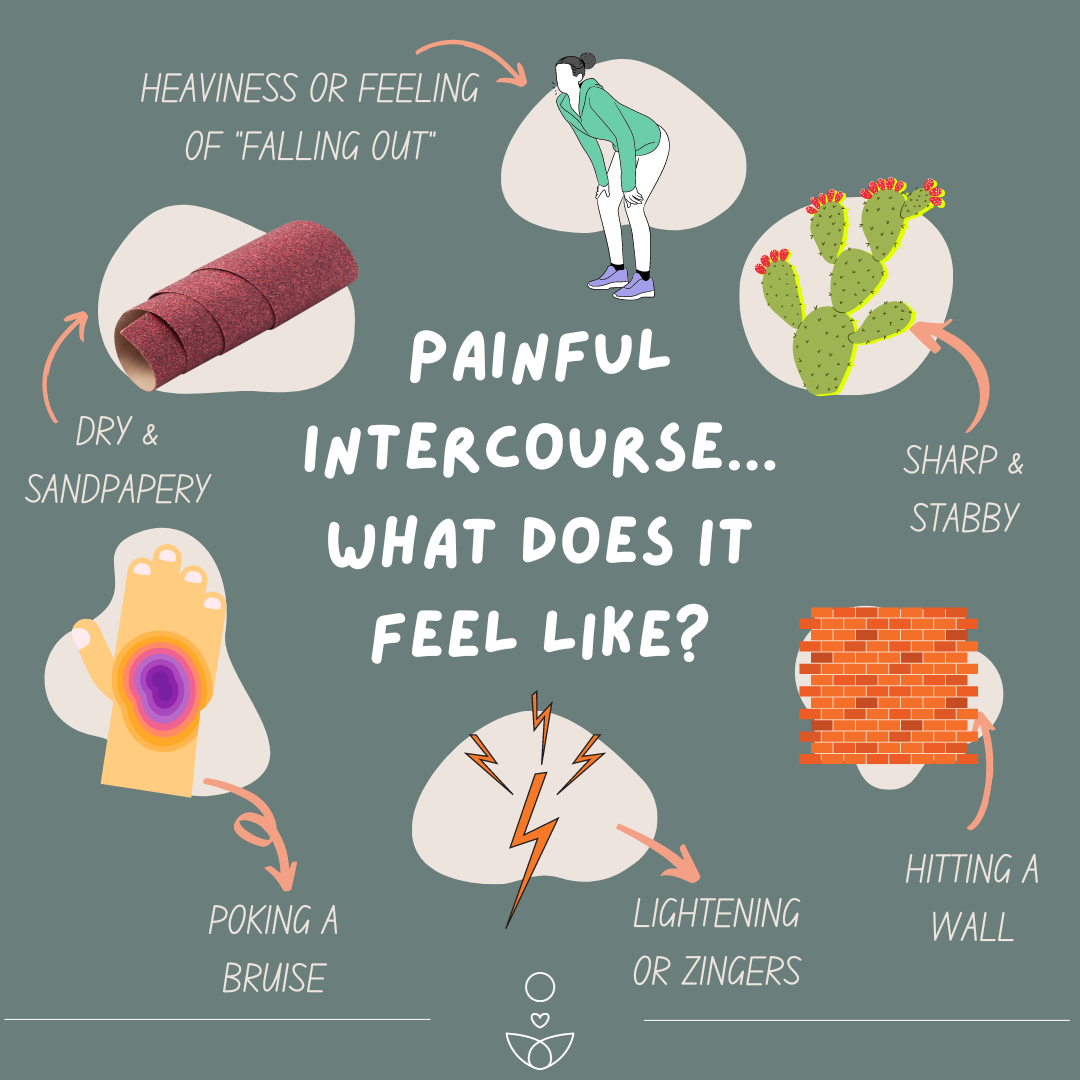Pleasure, Not Pain: Tackling Pelvic Floor Dysfunction for a Better Experience in the Bedroom1/13/2023 If you’ve ever had sex and before during or after intercourse thought to yourself, “Is what I just experienced normal? Does sex feel like that for everyone?” you’re going to want to keep reading. Painful intercourse, also known as dyspareunia, can be caused by pelvic floor dysfunction. The pelvic floor is a group of muscles, nerves, and connective tissue that support the pelvic organs and control bladder, bowel, and sexual function. When these muscles become weak or tight, it can lead to a variety of issues, including pain during intercourse. Keep reading to discover if the uncomfortable sensations you’re feeling are “common but not normal.” Initial Entry We often have people come into our clinic and tell us that when they attempt to insert an object everything feels very "sharp and stabby," or that there’s a sensation of a “wall” blocking the object’s entrance. We also commonly hear that their vaginal or anal opening almost feels like “sandpaper”, very dry, and burning sensations no matter how much lubrication they use. There can be several reasons for this type of pain, many of them pointing back towards the pelvic floor muscles as an issue. Deeper Entry If our patients have pain with deeper entry, that will explain it feels "achy", almost like someone is "poking a bruise" deep, deep inside the pelvis.. Another common sensation people experience is, “it feels like they’re running into something or hitting my organs”, depending on what position they’re in. People who are experiencing these sensations often tell us that they can handle certain positions like missionary, but others like being on top, is totally out of the question. This is probably due to a muscle issue, even though it feels much worse than that. Pain with Tampon, Pap Smear, or Sex Toys If you’ve never been able to put a tampon in or have a gynecological exam without pain and dread, it could very well be a pelvic floor problem. This can also be a problem in bedroom while trying different toys and experiencing pain with insertion or usage. Pain During Orgasm When you’re having an orgasm, your pelvic floor is essentially involuntarily squeezing and releasing repeatedly. The problem is, when your pelvic floor muscle is too short and you have an orgasm, this can become extremely painful because the muscle is over contracted. This can also make your other symptoms (bladder, bowel, back pack, etc ) worse afterward. A lot of our patients who are dealing with this tell us they don’t even want to have sex anymore because the best part is taken away with pain. Oftentimes this sensation is described to us as a “Charlie horse in the vagina”, “electricity-like”, or like “zingers”. Pain After Intercourse It’s very common for patients to tell us that they can only have sex at the end of the day because afterwards they’re in so much pain that they can’t stand up and go about their day, they must lay down until the pain subsides. If they try to have sex earlier in the day and try to go about business as usual, they experience heaviness in the vulva or pressure, almost like it feels like something may “fall out” if they stand up for too long. This can be extremely frustrating because what should be fun and spontaneous, must be planned out and routine. The Bottom Line Though all of these symptoms are very common, and we see them all the time, they are in no way normal. If everything is functioning correctly in the body, sex should never hurt or be uncomfortable. If you’ve ever experienced any of these sensations, feel free to call our office or watch the video below for more information. We want to help you take back your confidence in the bedroom and get back to living life on your terms! Take back control so your pelvic floor isn't running the show. P.S. If you’ve ever caught yourself saying “is this all it is?” during intercourse, stay tuned. Next week’s blog will feature what it means if you’re not feeling the “fireworks” everyone always talks about.
0 Comments
Leave a Reply. |


 RSS Feed
RSS Feed